In a frequency distribution, class limits represent the smallest and largest data values that can belong to each class.
Each class in a frequency distribution has a lower class limit and an upper class limit:
- Lower class limit: The smallest data value that can belong to a class.
- Upper class limit: The largest data value that can belong to a class.
The following examples show how to find class limits for different frequency distributions.
Example 1: Finding Class Limits in a Frequency Distribution
Suppose we have the following frequency distribution that represents the number of wins by different basketball teams:
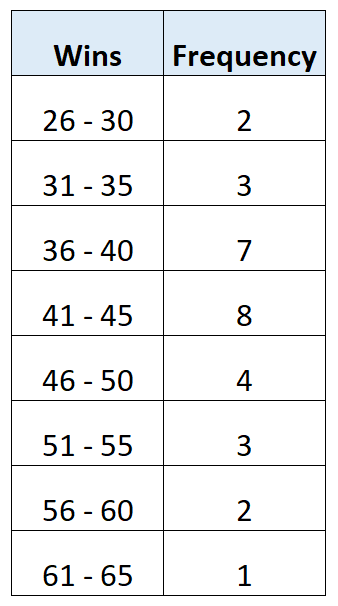
The lower class limit is simply the smallest possible value in each class:
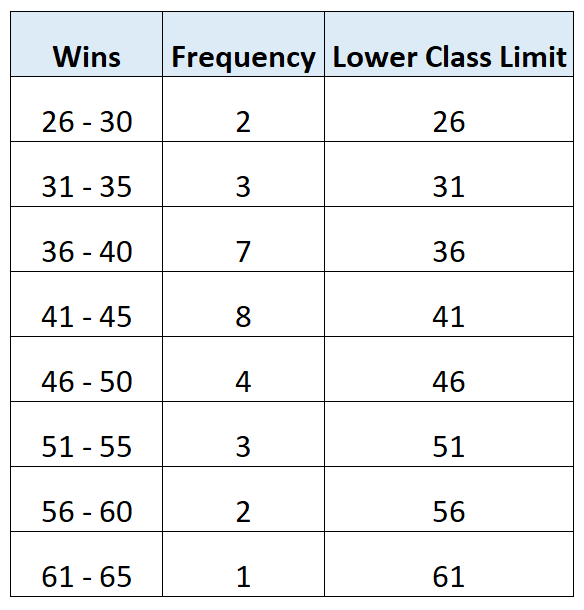
Conversely, the upper class limit is the largest possible value in each class:
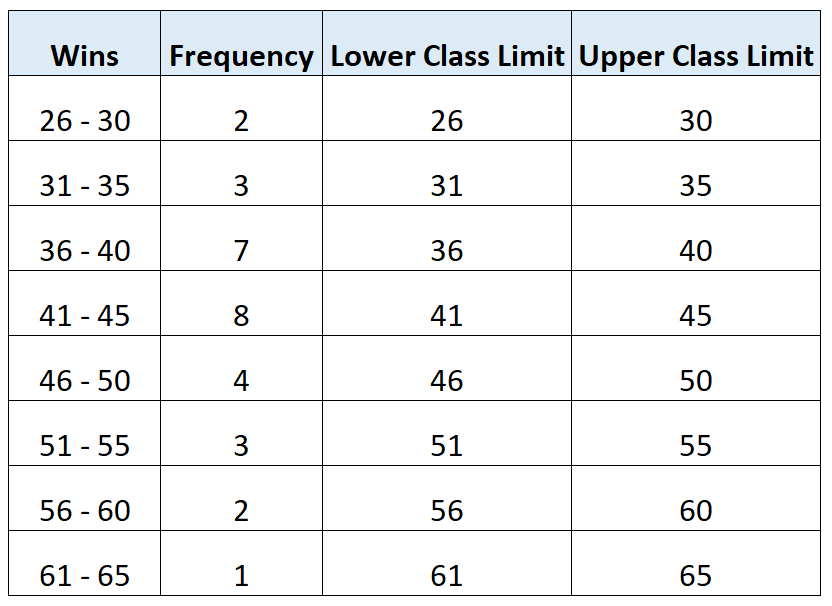
Example 2: Finding Class Limits in a Frequency Distribution
Suppose we have the following frequency distribution:
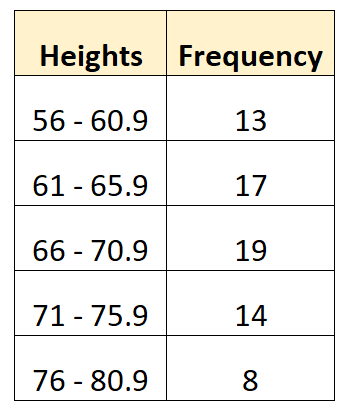
The lower class limit is the smallest possible value in each class:
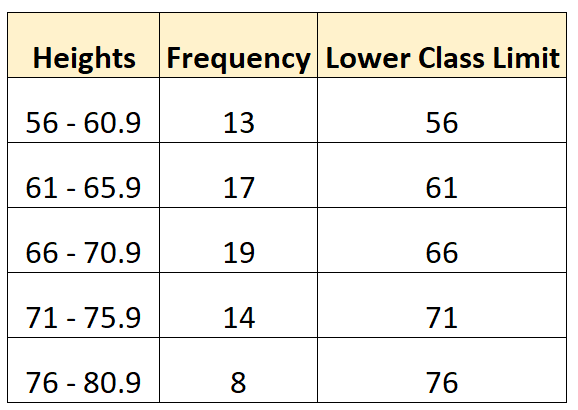
And the upper class limit is the largest possible value in each class:
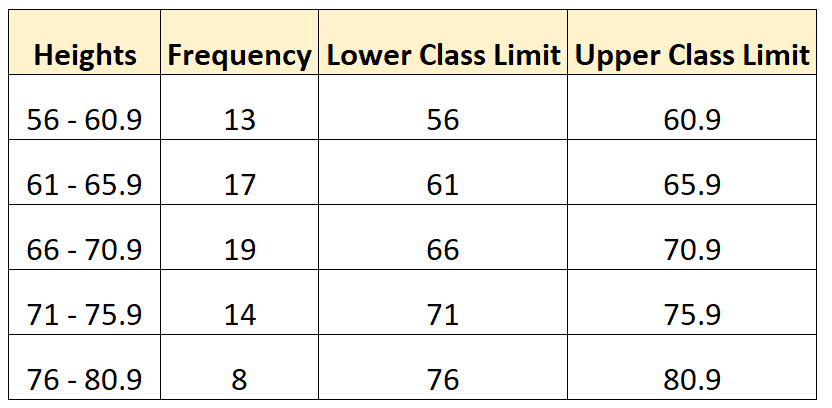
Additional Resources
How to Find Class Boundaries (With Examples)
How to Find Class Midpoints (With Examples)
How to Find Class Intervals (With Examples)